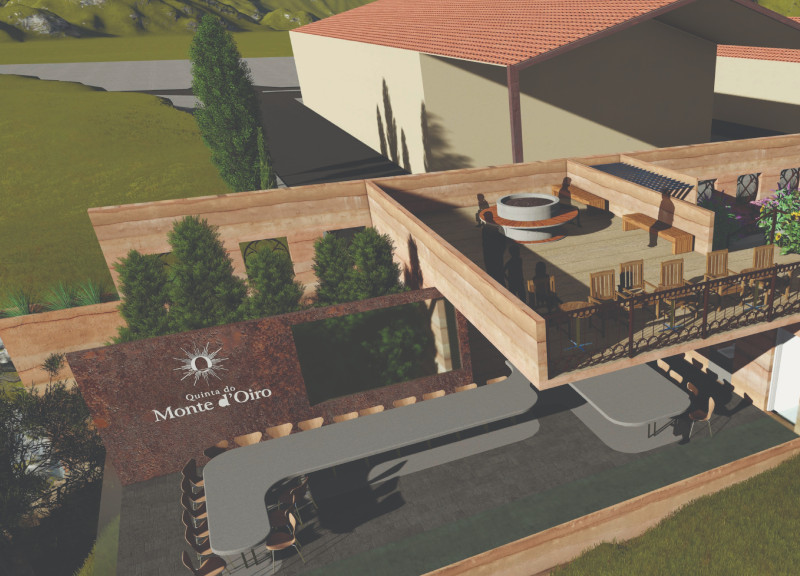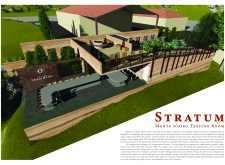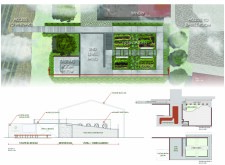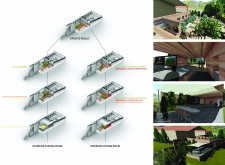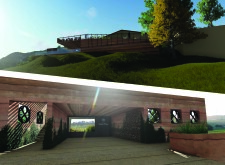5 key facts about this project
The Quinta do Monte d'Oiro winery is located in a scenic region renowned for its vineyards and well-established wine-making traditions. The Stratum Tasting Room serves as an engaging space for visitors to connect with the wine-making process. The design intends to strengthen the link between the indoor environment and the surrounding landscape, enhancing the overall experience of wine tasting.
Design Concept and Axial Relationships
The layout includes a main axis that directs guests from the entrance road to the tasting room, where they encounter a framed view of the vineyard. This initial sight helps establish a direct connection to the outdoor landscape. A secondary pathway emerges from the main plaza, guiding visitors to both the tasting room and the vineyard. The convergence of these axes creates a meaningful threshold that invites exploration and engagement with the winery's offerings.
Materiality and Structural Integrity
The tasting room prominently features rammed earth walls, made from soil displaced during construction. This choice of material establishes a strong relationship with the site and reflects its geological history. The earth-toned walls add texture and warmth, ensuring that the structure feels connected to its environment.
Spatial Flexibility and Experience
A key feature of the design is the sliding door that remains open when the room is not in use, promoting a sense of continuity between the indoor and outdoor areas. When the space is being utilized for tastings, the door can close to provide privacy or pivot open to align with a glass pocket wall. This adaptability allows the room to cater to various types of events, making it suitable for small gatherings or larger functions. The concealed table can be revealed from the floor, enhancing the room's versatility.
Engagement with Nature
The design also incorporates large windows that offer views of the vineyard, which strengthen the presence of nature inside the tasting room. Next to the entrance, stairs lead visitors through an herb garden and up to a raised platform that presents broad views of the vineyard. This thoughtful design not only enhances the experience for visitors but also emphasizes the importance of connecting with the landscape and the heritage of wine-making.
The rammed earth walls enrich the atmosphere of the space, providing a natural and tactile experience while reinforcing the connection between the building and its setting.


